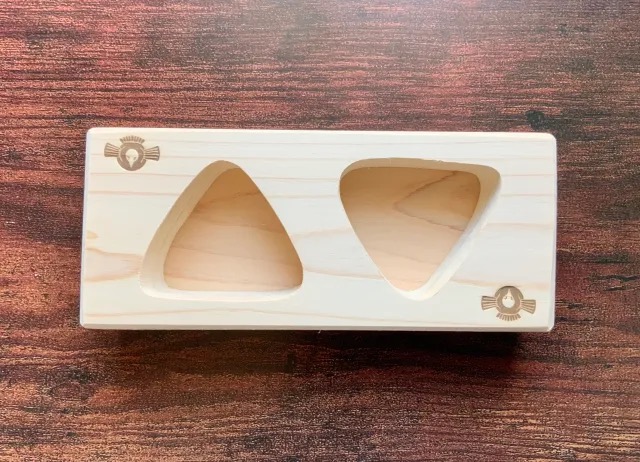
We find out if this sell-out hit product is worth the hype.
Onigiri rice balls are commonly made by hand in Japan, but they can be difficult to create, especially when the rice is hot as it makes it hard to hold, distorting the shape. That’s where rice specialists Akomeya are here to help, with an exclusive rice ball mould that’s so popular it sells out every time it becomes available.
According to reviews from customers, the mould helps to make beautiful onigiri that look like something you’d buy at a fancy department store. There are two sizes available, small and large, and as we were curious to find out if the mould lived up to the hype, we played things safe by opting for the smaller version.
▼ Sylvanian Families characters not included.
First impressions were undeniably good, as the cypress wood had a beautifully fresh, woodsy aroma. This not only adds flavour to the rice but helps to improve it, as the wood absorbs excess moisture so you can enjoy the rice in its optimal state.
To use the mould, first moisten it with water and then fill the cavities with rice up to the halfway point. Then add your favourite filling, like an umeboshi pickled plum, as seen on the left of the image below, before covering it with rice (right, below).
Though the rice was piping hot it had no trouble settling in place and the filling stayed put in the centre which was impressive, seeing as it can move about a bit during hand-moulding. To determine which was better — wood-moulded or hand-moulded — we crafted a rice ball by hand, using cling wrap to keep our fingers clean and fashion it into a triangular shape.
▼ The rice was very hot to hold, even through the plastic wrap.
Comparing the completed rice balls, we found that the rice balls made with the mould (right, below) had a more beautiful shape.
Upon tasting them both, the wood-moulded onigiri (right, below) won yet again, as the grains of rice were noticeably fluffier. Looking closely, you can see that the grains of rice in the hand-moulded variety are flattened, while the grains from the wood mould remained plump, despite being packed down quite tightly.
As for the filling, it seemed to be confined to one small section in the hand-moulded type, whereas the wood mould (right, below) helped to disperse it more evenly, creating a more well-balanced flavour.
We definitely preferred the wood mould, rating it higher in terms of the resulting flavour and texture of the rice ball. However, would it still do well with different ingredients?
▼ Left to right: Plum Chirimenjako (dried young sardines), Green Onion and Bacon, Cheese Okaka (finely chopped dried bonito flakes), Furikake (dried seasoning) with Nori (seaweed).
As you can see, the wood mould did a fantastic job yet again, but we did find it had one weakness — when you add rice that’s been blended with large ingredients, like green onion and bacon, it creates gaps in the rice ball, causing it to break apart when you hold it in your hand.
That’s easily fixed though, because instead of adding the ingredients to the rice before it gets to the mould, simply add them as a filling instead and you should have no problems.
▼ Oh, and you’ll want to have a rice scoop handy to help pat the rice in, as it’s hot to touch.
After using the mould, we can safely say it exceeded our expectations, so much so that we’re kind of lamenting the fact we didn’t purchase the larger size as well. Luckily for us, though, the large size is still an option as it’s now back in stock, along with the small version, after months of being out of stock due to popularity. It certainly is worth the hype, and deserves to be on your shopping list when visiting Japan, where you can purchase it at Akomeya stores and online, priced at 2,200 yen (US$15.11) for the small and 2,530 yen for the large.
Related: Akomeya Tokyo, Rakuten Market
Photos ©SoraNews24
● Want to hear about SoraNews24’s latest articles as soon as they’re published? Follow us on Facebook and Twitter!